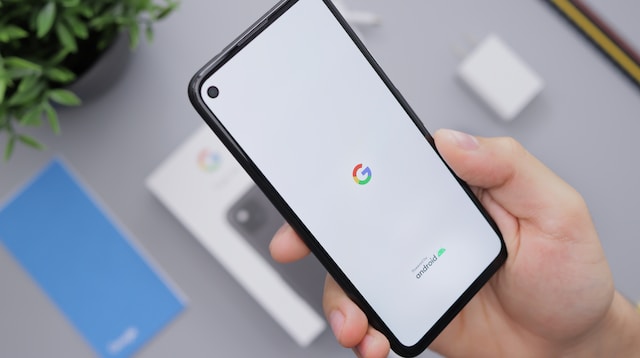In this digital age, the ability to remotely control android phone from another phone without permission has become a topic of interest and concern. While there are legitimate use cases for remote access, such as tech support or parental control, there are also potential risks involved, particularly if this access is used without permission. This article delves into the methods and considerations for remotely controlling an Android phone from another device without violating privacy or breaking the law.
With the increasing dependency on smartphones and the need for remote assistance, the ability to control an Android phone remotely can offer convenience and support. However, it’s essential to approach this capability with caution, ensuring that ethical considerations and legal boundaries are respected.
Understanding Remote Access
Remote control refers to the ability to manipulate a device from a distance, typically through an internet connection. While remote control can be a powerful tool, it’s crucial to distinguish between legitimate and potentially malicious use cases.
Defining Remote Control
Remote control involves accessing the user interface of a device from another location. This can range from troubleshooting technical issues to assisting someone with device navigation.
Legitimate Use Cases
Legitimate scenarios for remote access include helping a family member set up their device, troubleshooting software problems, or locating a lost phone. In these instances, remote control can streamline processes and provide assistance.
The Ethics and Legalities
Remote control capabilities raise ethical concerns surrounding privacy and security. Without proper authorization, accessing someone else’s device remotely is a breach of privacy and, in many cases, illegal.
Privacy Concerns
Unauthorized remote access can lead to the exposure of sensitive information, including personal messages, photos, and financial data. Respecting privacy is paramount to maintaining trust in personal relationships and safeguarding against identity theft.
Legal Implications
Unauthorized remote control is a violation of various laws, including cybercrime statutes and privacy regulations. Depending on the jurisdiction, consequences can range from fines to imprisonment.
Exploring Third-Party Apps
Several third-party apps offer remote control features, enabling users to access and control their devices from afar.
Popular Remote Control Apps
Apps like TeamViewer and AnyDesk provide legitimate remote control services. These tools require device owners to grant explicit permission for remote access.
Security Measures
Reputable remote control apps implement encryption and security protocols to prevent unauthorized access. Users should only use well-established apps from trusted sources.
Built-in Solutions
Some phone manufacturers offer built-in solutions for remote access.
Google’s Find My Device
Google’s Find My Device allows users to locate, lock, or erase their Android devices remotely. It requires the device owner’s Google account credentials for access.
Samsung’s Find My Mobile
Samsung users can utilize the Find My Mobile service for similar features. It also requires the owner’s Samsung account credentials.
Establishing Consent
Before remotely accessing a device, obtaining explicit consent is essential.
Importance of Consent
Gaining permission respects the owner’s privacy and ensures ethical use of remote control features.
Navigating Permissions
Device owners should understand the permissions they grant to apps and services, especially those related to remote control.
Steps to Remotely Control Android Phones
If you have proper authorization, you can follow these steps to remotely control an Android phone.
Setting Up for Remote Control
Ensure the target device has a stable internet connection and a remote control app installed.
Initiating the Connection
Launch the remote control app on both devices. Follow the app’s instructions to establish a connection, which may involve entering unique codes or scanning QR codes.
Ensuring Security
Securing both the controlling and target devices is crucial.
Two-Factor Authentication
Enable two-factor authentication on accounts linked to remote control apps to add an extra layer of security.
Secure Passwords
Use strong, unique passwords for all accounts associated with remote control capabilities.
Potential Misuse and Prevention
To prevent unauthorized remote access, remain vigilant.
Signs of Unauthorized Access
Monitor your device for unusual activities, such as apps opening or settings changing on their own.
Protecting Your Device
Regularly update your device’s software and avoid downloading apps from untrusted sources.
Conclusion
Remotely controlling an Android phone from another device can be a valuable tool, but it must be used responsibly and ethically. Respecting privacy, obtaining consent, and adhering to legal boundaries are paramount. By following secure practices and understanding the implications, users can harness the power of remote control while safeguarding personal information.
FAQs
- Can I remotely control any Android phone?
- While remote control is possible, it requires explicit consent from the device owner. Unauthorized access is both unethical and illegal.
- Are built-in solutions safer than third-party apps?
- Both built-in solutions and reputable third-party apps can be secure if used correctly. Always prioritize security and obtain permission.
- What should I do if I suspect unauthorized remote access to my device?
- Immediately disconnect the device from the internet, uninstall suspicious apps, and change your account passwords.
- Is remote control illegal?
- Remote control itself is not illegal if used with proper authorization. Unauthorized remote control violates privacy and laws.
- How can I ensure my device’s security against remote attacks?
- Regularly update your device’s software, use strong passwords, and be cautious about the apps you download and install.


